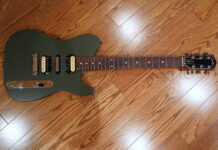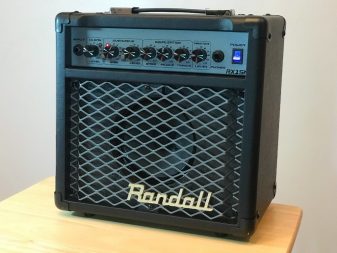 Guitar playing fans of heavy music are probably well acquainted with Randall amplifiers. With heavyweight guitarists of the genre such as Dimebag Darrell, Kirk Hammett, Scott Ian, and George Lynch using its products throughout their careers, the company has had a huge amount of visibility since its creation in the late sixties. Apart from offering high-powered, high gain amplifier heads, the manufacturer also provides players with small practice combo options. I’ve received the RX15MBC, a two channel, compact model ideal for practising at home and really working on your chops. Let’s see if this unit is the ideal choice for your needs and situation.
Guitar playing fans of heavy music are probably well acquainted with Randall amplifiers. With heavyweight guitarists of the genre such as Dimebag Darrell, Kirk Hammett, Scott Ian, and George Lynch using its products throughout their careers, the company has had a huge amount of visibility since its creation in the late sixties. Apart from offering high-powered, high gain amplifier heads, the manufacturer also provides players with small practice combo options. I’ve received the RX15MBC, a two channel, compact model ideal for practising at home and really working on your chops. Let’s see if this unit is the ideal choice for your needs and situation.
I’ve recorded a short video featuring sound examples of both channels, as well as my impressions of the RX15MBC. There is a bit of confusion about the specifications of this amplifier. The Randall website states that the amplifier is 15W, with an 8 inch speaker, while the user manual claims it is 12W with a 6.5 inch speaker. The important thing here to consider is the fact that this is meant to be a practice/home-use product, so sound quality should be the main focus over specs.
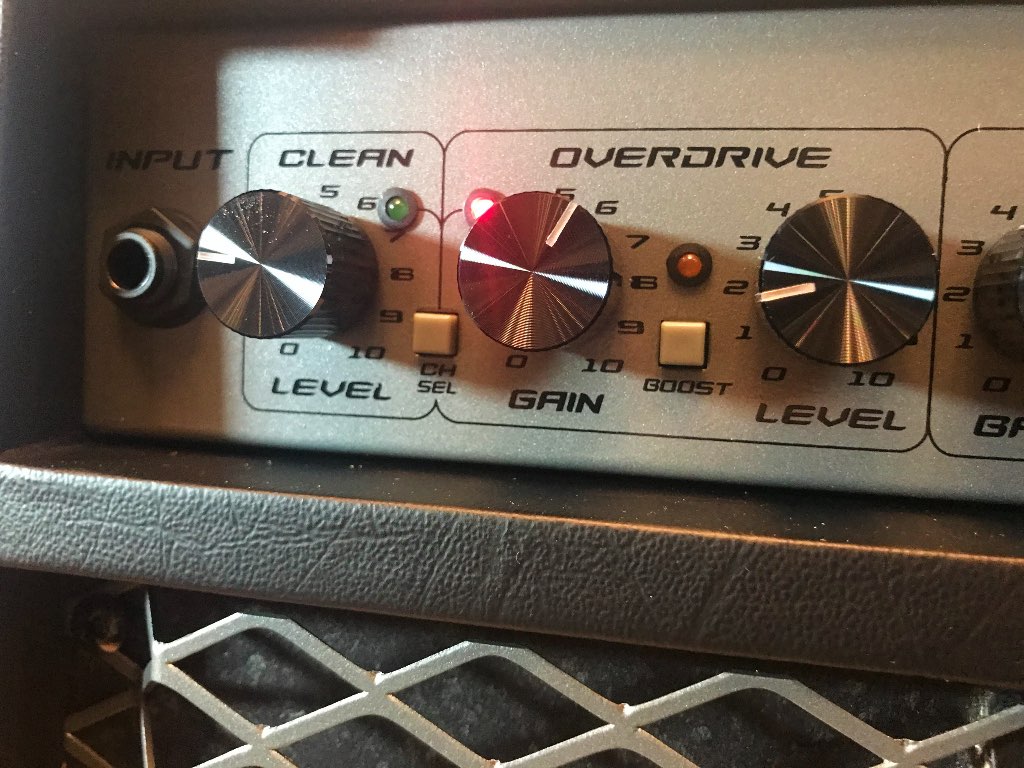
Everything you need for home practice
There are a variety of sounds available on the RX15MBC, thanks to two separate channels. The first is simply a clean channel with a single level control. At the press of a button, you can flip to the overdrive channel. In addition to a volume control, you also get a gain knob. This will make it possible to select many different drive settings from crunchy overdrive tones to thick, saturated distortion. There is an additional boost button to really get things cooking and attain high-sustain lead sounds. Careful planning and settings could mean that this becomes a faux three channel tool.
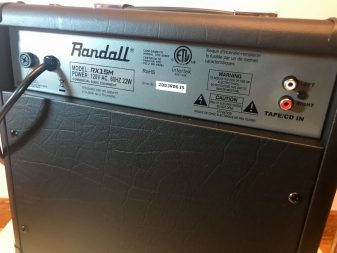
A three band EQ is also available and is shared by both the clean and overdrive channels. You will be able to adjust bass, mid, and treble frequencies. This is a welcome inclusion because a lot of the amps this size only feature either a single tone control or treble/bass knobs. A master volume adjusts the overall volume of the unit.
Additional features include a headphone output for silent practice and added privacy for working on repetitive exercises for your next shred solo spot. On the back panel there’s an auxiliary input—to play along with your favourite recordings. The connector is RCA, which is slightly uncommon nowadays. You can still find them in electronics and music stores if you don’t have one lying around. The front grill is a really cool enhancement, being made out of metal. This adds an aggressive look, totally in line with the company’s musical inclinations.
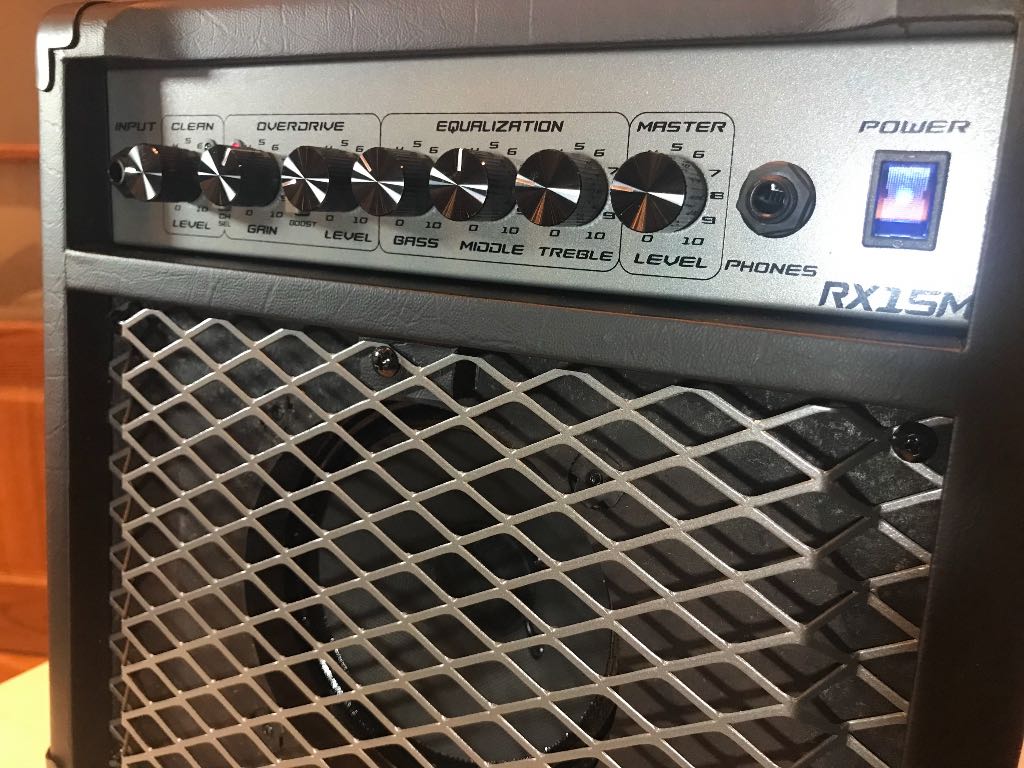
Not a one trick pony
While Randall is synonymous with Rock and Metal, the RX15MBC can still provide a wide variety of tones. The clean channel, for example, offers a nice, natural, clean sound. It’s basically an uncoloured, louder version of your guitar signal. You can still adjust it to your liking with the EQ and your guitar tone knob, to suit your needs. This kind of sound is great for practising. Without any added effects, compression, and colouring, you can really work on your chops. Thanks to this accurate, and sometimes brutally honest, representation of your technique, you’ll really be able to work on precise hand mechanics to take your playing to the next level.
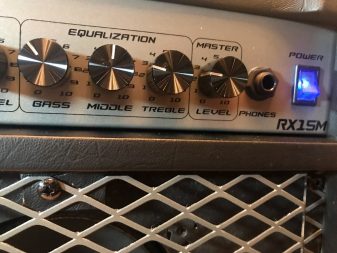
If you are interested in overdriven and distorted sounds, this is an excellent choice. We are talking about the bread and butter of Randall as a company here. Thanks to a very responsive gain knob, it’s great to explore different sonic territories from punchy chording to thick distortion. The EQ section really helps to massage the tone in either a crunchy, mid-range direction or a chunky metal scoop. You can really crank the gain up with the boost button, making every technique feel easy and fun to play. I’ve used this channel a lot in the video, so give it a listen to get a good idea of the possibilities.
It’s worth noting that the smaller speaker size will affect the overall sound. Being less than 12″, which is the usual standard, it won’t have the same rounded bass frequencies. This type of compromise is very common in practice amplifiers. Thankfully, you can compensate with careful EQ tweaking. I also like to put these types of amplifiers against a wall for an added bass boost thanks to a physical phenomenon called the proximity effect.
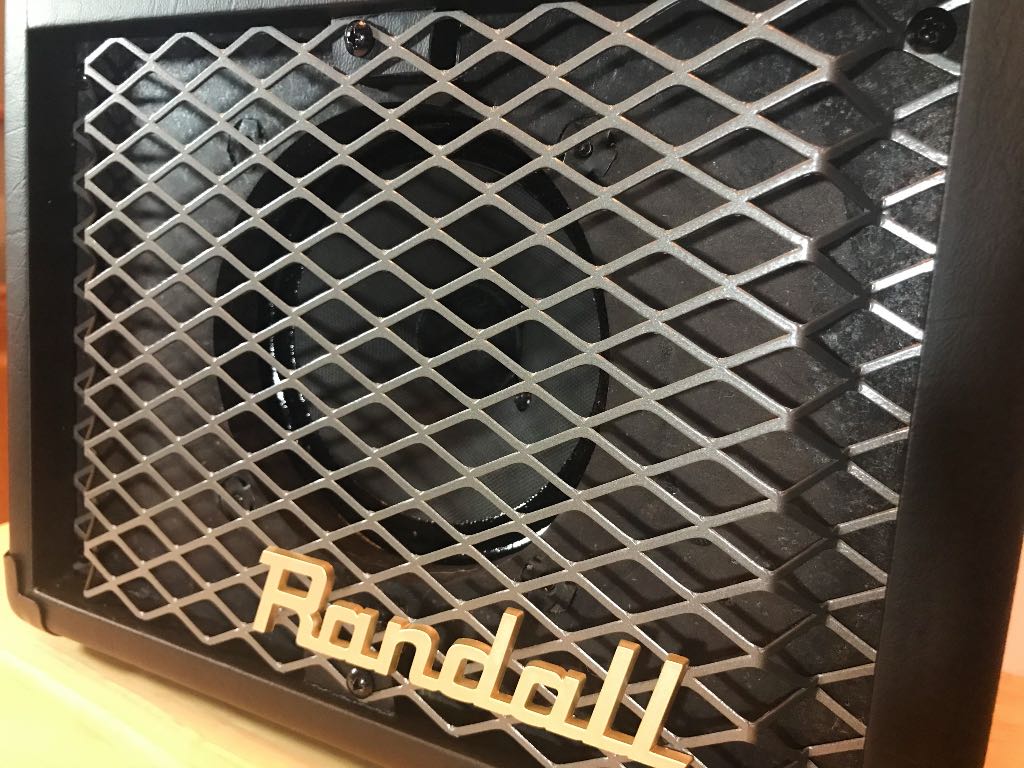
Great practice tool, at any level
For people just starting out, it’s hard not to like the RX15MBC, especially if you are a rock or metal lover. This unit will hit all the checkboxes, thanks to simplicity, affordability, and awesome tones—including great distortion options.
The headphone output will be very handy for working on licks, riffs, and techniques without disturbing anyone in the vicinity. That being said, the master volume offers a ton of versatility in the volume department, making it easy to jam to the heaviest tracks at a reasonable level.
Its portability means that you will be able to carry it along with you, no matter where you go. It’s definitely well constructed and will handle years of wear and tear. Again, the metal grill is really cool looking, and I imagine it fitting in very well in a heavy music-oriented bedroom décor.
For experienced players looking for a great practice tool to work on their chops, this might be it. The clean channel is good enough to cover most situations, and the overdrive channel is very versatile. Guitarists that like simplicity will feel right at home with this unit. With no digital models and effects to speak of, you’ll find yourself in the same position that many famous musicians have when working on their craft—with a straightforward, old-school amplifier. Personally, I like to come back to these types of products to reduce the number of options and focus on the playing. Options paralysis is non-existent, and you’ll be able to get quality, emphasized practice.
Check out the Randall RX15MBC on Best Buy’s website.

